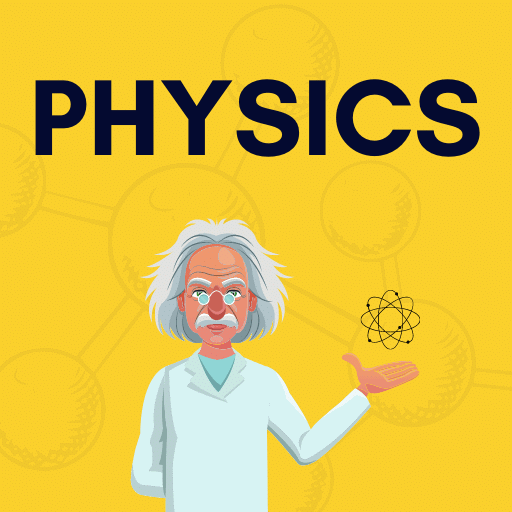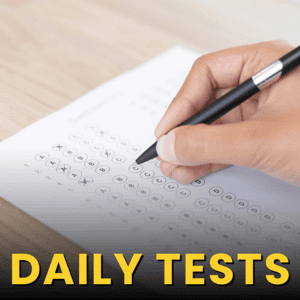Biomechanics and Sports Chapter Notes | Physical Education Class 12(XII) - Notes & Model Test Papers - Humanities/Arts PDF Download
The Incredible Free-Kick by Roberto Carlos
In 1997, Roberto Carlos scored a stunning goal from a free-kick that seemed to go against the laws of physics. This remarkable event continues to fascinate scientists even today. When the goal was first seen, experts in physics worldwide were puzzled by what they witnessed. It sparked numerous studies and discussions about how the ball curved during that kick at the Stade de Gerland in Lyon.
One of the most notable investigations into this phenomenon was carried out by a group of four French scientists - Guillaume Dupeux, Anne Le Goff, David Quere, and Christophe Clanet. Their research was published in the New Journal of Physics in September 2010. Through a series of experiments and analyses, they developed an equation to explain the ball's path and the various forces acting on it at that moment.
The scientists pointed out that in soccer, the trajectory of the ball can deviate significantly from a circular path if the shot is long enough. They used Roberto Carlos' famous free-kick as an example, noting that the shot was taken from about 35 meters away, a distance where such an unexpected trajectory is possible. They explained that with enough power behind the shot, the ball could bend sharply towards the net, surprising the goalkeeper.
While the scientists believed that under the right conditions, another player could replicate the goal, one influential physicist from Brazil disagreed. He described Roberto Carlos’ goal as a "football miracle." Professor Luis Fernando Fontanari from the Sao Roberto Carlos Physics Institute, part of the University of Sao Paulo, explained that although physics could explain the ball's path, the specific conditions of the kick - like its power, the exact point of impact on the ball, and the distance to the goal - were so rare that they warranted calling it a miracle. Fontanari, an editor of prestigious scientific journals, added that if the ball hadn't gone into the net, it would have continued flying in a remarkable spiral pattern. He expressed doubt that such an extraordinary event would happen again.
Another scientist, Erez Garty from Israel, also explored the physics behind Roberto Carlos’ kick in a YouTube video aimed at making the concept accessible to a wider audience. He explained how Carlos, facing a difficult angle for a 35-meter free-kick, managed to score by using the principles of physics, particularly the Magnus effect. This effect, first observed by Sir Isaac Newton in the 17th century, explains how a spinning ball creates a difference in air pressure around it, causing it to curve in the direction of the spin. The Magnus effect is not only applicable in soccer but also in sports like golf, tennis, and baseball, where the spin of the ball influences its trajectory.
Introduction
Biomechanics is the study of how living bodies move, focusing on the role of muscles, bones, tendons, and ligaments in producing movement. It is a branch of kinesiology, which is the broader field of studying body movement, and it explores both the theoretical and practical aspects of how bodies move.
This field examines not only the structure of bones and muscles but also how they work together to create movement. It also looks at other body functions like blood circulation and kidney function from a mechanical perspective. The American Society of Biomechanics describes biomechanics as the interaction between mechanical principles and biological systems.
While biomechanics is often associated with humans, it also applies to animals, plants, and even the mechanics of individual cells. For instance, when studying the biomechanics of a squat, one would consider the position and movement of various body parts, including the feet, hips, knees, back, shoulders, and arms.
The principle of motion in biomechanics involves concepts like linear motion, velocity, speed, acceleration, and momentum. Motion refers to any movement resulting from a force. In physical activities, multiple forces and motions are at play, such as the angular motion around a joint or the movement of the entire body in different directions. While most body movements are caused by forces generated by our muscles, there are exceptions, like when an opponent pushes you to the ground.
Motion can be categorized as linear, angular, or general, depending on the direction of movement. Linear motion is the focus here, but understanding velocity, speed, acceleration, and momentum also requires knowledge of the other types of motion. Angular motion involves circular movement around a central point, which is what happens at joints during body movements. General motion is a combination of linear and angular motion, as seen in activities like sprinting 400 meters. Understanding the laws of motion is crucial for grasping the concept of motion and its application in physical education and sports.
Newton's Laws of Motion and Their Application in Sports
Newton’s First Law of Motion (Law of Inertia)
Definition:. body will remain at rest or continue to move at a constant velocity unless acted upon by an external (resultant) force. Inertia is the resistance of any object to any change in its motion, including a change in direction.
Examples in Sports:
- Hockey: When a hockey puck is slid on ice, it eventually stops due to friction. It also stops if it collides with an object like a player’s stick or a goalpost.
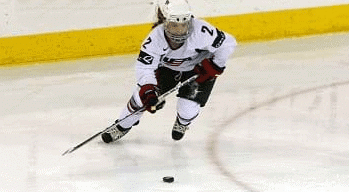
- Skating:. skater gliding on ice will maintain the same speed and direction unless an external force, such as friction or a push, acts on the skater.
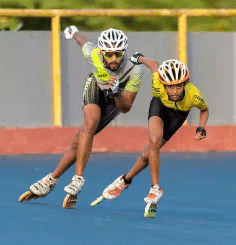
- Soccer: When a soccer player kicks the ball, they use their muscles to create a force that moves the leg and kicks the ball from rest into motion. The ball continues to move until another player or the net stops it or changes its motion.
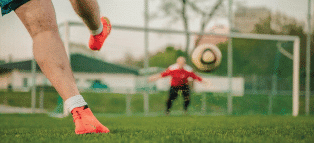
- Throwing a Ball: When a ball is thrown and is in mid-air, the only force acting on it is gravity. If gravity did not exist, the ball would continue traveling at a constant speed until affected by another object. If thrown upwards, it would eventually travel into space.
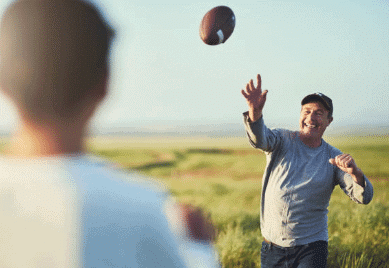
Newton’s Second Law of Motion (Law of Momentum)
Definition: The rate of change of momentum is proportional to the resultant force and occurs in the direction of the resultant force. Acceleration produced by a net force on an object is directly proportional to the magnitude of the net force, in the same direction as the net force, and inversely proportional to the mass of the object.
Examples in Sports:
- Shot Put:. player who applies more force and tosses the shot-put at the correct angle achieves greater displacement of the shot-put.
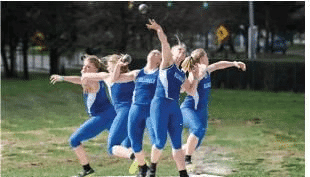
- Discus Throw: To determine the force acting on a 2kg discus accelerated at 20 m/s², use the formula F = m*a. In this case, F = 2*20 = 40 Newtons.
- Ball Kicking: When a ball is thrown, kicked, or struck, it tends to travel in the direction of the applied force. The greater the force applied, the greater the speed of the ball. Improving leg strength through training enhances a player’s ability to accelerate their body using their legs, resulting in better agility and speed.
- Soccer Kicking:. team requires more force to kick the ball high and fast in soccer. Understanding this law of motion helps players calculate the force needed for passes and shots.
Newton’s Third Law (Law of Reaction)
Definition: For every action, there is an equal and opposite reaction. When one object exerts a force on a second object, the second object exerts an equal and opposite force on the first object.
Examples in Sports:
- Walking: When you walk on a floor, the floor pushes you along. No force can act alone.
- Swimming:. diver pushes down on the springboard when diving off a board. The springboard pushes back, projecting the diver into the air.
- Rowing Boat: When jumping off a small rowing boat into the water, you push yourself forward toward the water. The same force that propels you forward makes the boat move backward.
- Soccer: During a soccer match, when kicking the ball, you feel the kickback force on your leg. The force is less noticeable because your leg has more mass than the soccer ball.
- Jumping: When jumping, your legs apply force to the ground, and the ground applies an equal and opposite reaction force (ground reaction force) that propels you into the air.
Levers
Levers are a fundamental type of machine that play a crucial role in the human body’s mechanism for movement. While they are often considered part of the skeletal system, it’s important to recognize the role of muscles in generating the necessary force for lever action. Without muscle power, the bony levers would remain stationary. Muscles, in turn, are inactive until stimulated by the nervous system.
A lever system consists of four essential components:
- The Load: This is the object that needs to be moved.
- The Fulcrum: The fulcrum is the joint around which the movement occurs.
- The Effort: This refers to the muscular force used to move the object.
- The Lever: In the human body, the bones act as levers.
To illustrate a lever system, it’s important to include all four parts. Each component has a standard symbol used to represent it in diagrams. Understanding these components and their roles is essential for grasping how lever systems function in the body.
Standard Symbols for Levers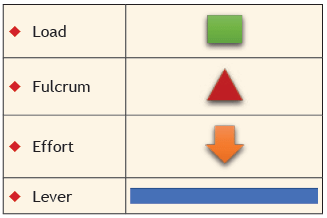
What is a Lever?
A lever is a straight, stiff bar that is used to lift or move something heavy by applying force.
Essentially, it's a strong piece of material that changes the direction or amount of force when pressure is applied at two different points, and it pivots around a third point.
The Fulcrum in a Lever
- The fulcrum is the specific point on a lever where it pivots or rotates.
- It plays a crucial role in determining the type of lever based on its position relative to the other parts, the load and the effort.
- In the context of human movement, the fulcrum is equivalent to a joint in the body. This joint determines the type of movement or action that occurs, similar to how the fulcrum affects the lever's function.
The Force/Effort Arm
It is the point at which the force is applied.
The Load/Resistance Arm
It is the point where the load or resistance is located.
Types of Levers
Instances of First-Class Levers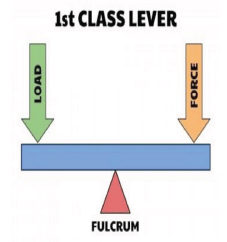
Triceps and Elbow Extension:
Example: Throwing a Ball
- Fulcrum: Elbow joint
- Effort: Triceps muscle
- Load: Arm and ball
V-Sit-Up Position:
Example: Performing a V-Sit-Up
- Fulcrum: Hip joint
- Effort: Abdominal muscles
- Load: Legs and lower body
Examples of 2nd Class Lever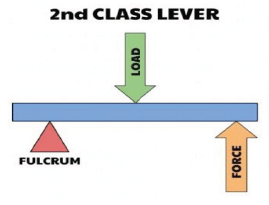
- When the foot acts as a whole, it functions as a second-class lever with the ball of the foot as the fulcrum. In this action, body weight is lifted to the toes by force applied at the heel.
- Fulcrum: Ankle joint
- Effort: Gastrocnemius muscle (calf muscle)
- Load: Body weight
- Straight Push-ups with the Feet Elevated
- Fulcrum: Ball of the foot
- Effort: Contraction of arm muscles
- Load: Body weight
Examples of 3rd Class Lever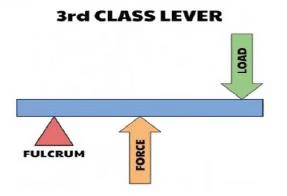
- Bicep Flexion at the Elbow
- Example: When throwing a ball Fulcrum: Elbow joint Effort: Biceps Load: Arm/Weight
- Sit-ups
- Example: When doing Sit-ups Fulcrum: Hip joint Effort: Abdominal muscles Load: Upper body
Application in Sports
The human leverage system is designed for speed and range of movement, even though it sacrifices some force.
For example:
- Biceps and triceps: These muscles have short force arms and long resistance arms, requiring significant muscular strength to move.
- Biceps: The force arm is 1 to 2 inches long. Triceps: The force arm is less than 1 inch long.
- Throwing a Ball: This action involves levers at the shoulder, elbow, and wrist joints. The longer the lever, the more effective it is in generating velocity.
- Tennis Example:. tennis player can hit a ball harder with a straight-arm drive than with a bent elbow because the straight arm creates a longer lever that moves at a faster speed.
- Sports Requiring Long Levers: Sports like baseball, hockey, golf, and field hockey benefit from long levers that produce more linear force and better performance.
- Quickness with Short Levers: In some situations, having a short lever arm is advantageous for quickness. For instance:Baseball Catcher:. catcher brings his hand back to his ear to secure a quick throw. Sprinter:. sprinter shortens his knee lever through flexion, almost catching his spikes in his gluteal muscles.
Examples of Lever Application in Sports
- Cricket Bat (2nd Class Lever): The fulcrum is at the top of the handle, the load is the bat’s body, and the force is applied closer to the neck of the handle.
- Kicking (Lower Limb, 3rd Class Lever): The fulcrum is at the knee joint, the force is applied at the tibial tuberosity (attachment of the quadriceps), and the load is the foot.
- Jumping (Plantar Flexion of the Foot, 2nd Class Lever): The load is at the toes, the fulcrum is at the heel, and the force is your body weight, which is anterior to your heel.
- Neck Movement (1st Class Lever): Looking up, down, or side to side involves the head balanced on the atlanto-occipital joint, which pivots like a see-saw.
Equilibrium (Stability/ Balance)
Equilibrium refers to a state of balance where the forces acting on an object are equal and opposite, resulting in no net force and no change in motion. It is a crucial concept in various fields, including physics, engineering, and sports science. In this context, we will explore the types of equilibrium, factors affecting equilibrium, and practical applications of equilibrium in sports and physical activities.
Types of Equilibrium
- Static Equilibrium: In static equilibrium, an object is at rest, and all the forces and torques acting on it are balanced. This means that the sum of vertical forces, horizontal forces, and torques must each be zero. For example, a book resting on a table is in static equilibrium because the force of gravity pulling it down is balanced by the upward force exerted by the table.
- Dynamic Equilibrium: Dynamic equilibrium occurs when an object is moving with a constant velocity, meaning there is no change in speed or direction. The forces and torques acting on the object are still balanced, but the object is in motion. An example of dynamic equilibrium is a cyclist riding at a steady speed on a flat road.
 |
Download the notes
Chapter Notes: Biomechanics and Sports
|
Download as PDF |
Factors Affecting Equilibrium
Several factors can increase or decrease equilibrium:
- Center of Gravity: When the center of gravity falls within the base of support, stability is increased. Lowering the center of gravity, such as by bending the knees, also enhances stability. For instance, a wrestler maintains balance by lowering their center of gravity.
- Base of Support:. larger base of support increases stability. For example, spreading the feet while standing provides a broader base and greater stability.
- Weight: Greater weight contributes to stability. Heavier objects or individuals are harder to move, as seen in combat sports like judo and wrestling.
- Anticipating Forces: Anticipating an oncoming force and positioning the center of gravity near the edge of the base of support can enhance stability. Extending the base of support in the direction of the expected force also helps.
- Friction: Increased friction between the body and surfaces in contact can improve stability.
- Rotation about an Axis: The ability to rotate about an axis can enhance balance, as seen in activities like cycling.
- Kinaesthetic Physiological Functions: The vestibular system, vision, touch, and kinaesthetic awareness play a crucial role in maintaining balance and stability.
Practical Applications in Sports
Athletes and performers use the principles of equilibrium to maintain balance and stability in various activities. Some examples include:
- Cricket: Batsmen maintain a stable stance by keeping their center of gravity within the base of support, allowing them to react quickly to incoming balls.
- Sprinting: Sprinters use starting blocks to create a stable base and lower their center of gravity, enhancing stability during the initial phase of the race.
- Wrestling: Wrestlers adopt a wide stance and lower their center of gravity to maintain balance and stability while engaging with opponents.
- Gymnastics: Gymnasts walking on a balance beam use a narrow base of support and adjust their center of gravity by raising limbs to maintain stability and prevent falls.
Centre of Gravity
The Centre of Gravity (COG) is the point where the entire weight or mass of an object is considered to be concentrated. In a person standing in the anatomical position, the COG is located at the intersection of three main planes and axes.
However, because the human body is flexible and fluid, it is challenging to pinpoint the COG accurately. When a person changes their position, the COG shifts as well. This means that during many sports activities, the COG is constantly moving.
For rigid objects, finding the COG is not difficult, especially if the object has a uniform density and an asymmetrical shape. In such cases, the COG is at the object's centre. An object suspended from its COG is in a state of rotational equilibrium.
Balance and Stability in Sports
- Balance, whether stationary or in motion, is crucial for success in most sports and physical activities. An athlete's stability depends on their COG, which is typically located in the middle of the body. This is the point around which the body can rotate freely in any direction, and where the body's weight is evenly distributed.
Examples of Centre of Gravity in Sports
- In wrestling during the snatch and jerk, wrestlers widen their legs and lower their bodies to maintain stability, which lowers their COG.
- In running, a runner's COG is located in the lower region of the pelvis and in front of their body due to the forward lean of the upper body. This positioning of the COG helps with acceleration.
- In basketball and volleyball, defensive players lower their COG by spreading their legs to establish a better position against offensive players.
- In short sprints during track events, athletes start in the "Set" position, transferring their body weight onto their hands. This helps them achieve a quick start while maintaining balance. If the COG falls behind the line of the hands, it can delay the start.
- In wrestling, a wrestler spreads their arms, knees, and legs on the mat when falling to create a balanced position, making it difficult for the opponent to move them.
- The COG also plays a role in activities like throwing, lifting, pulling, and stopping moving objects.
Friction in Sports
Friction is a force that opposes the motion between two surfaces that are in contact with each other. It always acts in the direction opposite to the motion of the object. Friction also generates heat; for instance, when you rub your hands together quickly, they become warmer. Frictional force is a contact force that works against the motion of an object. This force can bring moving objects to a stop because it acts in the opposite direction to their motion. For example, when you roll a ball on a surface, it eventually comes to a stop due to friction.
Types of Friction
1. Static Friction
- Static friction occurs when the force applied to an object is not enough to make it move. This type of friction prevents the motion of stationary objects. For example, if you try to push a heavy object with less force than the force of static friction between the object and the floor, the object will not move. To initiate the motion, you need to exert more force than the static frictional force. Once the object starts moving, static friction no longer applies.

2. Kinetic Friction
- Kinetic friction comes into play when force is applied to an object and it starts moving. Kinetic friction includes three different types:
- Sliding Friction: This occurs when an object is pushed across a surface. It involves two bodies in contact, with one body moving on the surface of the other by sliding or rubbing. Examples include skating on ice, planting a pole in the pole vault event, and skiing or sliding weight.
- Rolling Friction: Rolling friction occurs between wheels and a surface when one body rolls over the other. An example is when a hockey or cricket ball is hit, and it begins to roll on the ground. This type of friction is commonly seen in sports, such as with roller skates and skateboards.
Fluid Friction
Fluid friction is the force that opposes the movement of objects moving through a fluid, which can be a gas, such as air, or a liquid, such as water.
For example:
When you ride a bike, there is fluid friction between you and the air. Cyclists often wear streamlined helmets and specially designed clothing to reduce this type of friction.
Fluid friction is also a factor in activities like paragliding and hang gliding, where athletes glide through the air.
Things that Affect Friction
- Applying a lubricant between two surfaces, such as motor oil, grease, or wax, can reduce friction.
- Friction is generally lower when rolling an object compared to pushing it.
- Rougher surfaces increase friction.
- Friction increases when the force between two objects is increased.
- Smooth surfaces typically produce less friction than uneven surfaces.
Methods of Reducing Friction
- Polishing: By polishing and smoothing a surface, its unevenness is reduced, leading to decreased friction. For example, shining a cricket ball increases its swing due to reduced friction.
- Lubricating: Applying lubricants like motor oil, grease, or wax is a common method to reduce friction. These lubricants are widely used in mechanical systems such as bearings and gears.
- Using Wheels and Ball Bearings: Rolling an object using wheels or ball bearings is easier than sliding it. This method converts sliding friction into rolling friction, reducing friction between contact surfaces and saving energy and time. For instance, roller skates use both wheels and balls to reduce friction.
- Streamlining: Streamlining the shape of an object helps reduce air friction. Objects like javelins, boats, ships, and vehicles are designed with sharp points to minimize air resistance.
Advantages and Disadvantages of Friction in Sports
Friction plays a crucial role in various sports, providing necessary grip and control. Here are the advantages of friction in different sports:
- Athletics: Spiked shoes are used in athletics to increase friction, allowing for better speed. Different types of shoes are used for short-distance and long-distance running.
- Badminton:. good grip on the racket is essential in badminton. Increased friction between the racket and the player's hand helps prevent the racket from slipping and aids in making accurate shots.
- Basketball: Friction between players' shoes and the court surface is crucial for maintaining control. Players often wipe their shoes to enhance friction for better movement.
- Cricket: Fielders wear spiked shoes to increase friction with the ground, aiding in quick movements during bowling, running between wickets, and preventing slips.
- Cycling: Friction between the tires and the road surface prevents slipping and skidding. Additionally, friction between the brakes and the wheels helps cyclists slow down.
- Football: Friction is important for footballers to run, change direction, and maintain their position on the ground. It also aids in tackling opponents.
- Gymnastics: Gymnasts rely on friction to perform on the horizontal bar. They use lime powder on their hands to increase friction between their palms and the bar.
- Javelin Throw: Friction between the thrower's hand and the javelin is crucial for a good grip. Additionally, friction between the shoes and the track provides the necessary ground reaction force for an effective throw.
- Running: Friction between the shoes and the track allows athletes to run fast, decelerate, stop, and change direction. Insufficient friction can lead to slipping and falling.
- Soccer: Different spike patterns on shoes are used by players to achieve the required friction for their specific roles on the field.
- Weightlifting: Weightlifters need increased friction between their feet and the floor to prevent slipping while lifting heavy weights. Specially designed shoes help achieve this.
Friction is also necessary for pulling and pushing activities, which are common in all sports. Therefore, it is clear that friction is essential for optimal performance in various games and sports.
Drawbacks of Friction in Sports
Friction, while essential in many sports, also has its disadvantages. Here are some scenarios where friction can be detrimental:
- Bicycling: In cycle racing, the tires generate heat due to friction. Excessive heat can cause the tires to burst, leading to serious accidents.
- Weightlifting and Gymnastics: Friction can damage the skin on the palms of athletes in weightlifting and gymnastics. This can cause slips during lifts. To mitigate this, athletes are advised to use powder on their palms and wear special shoes to maintain the right amount of friction.
- Pole Vault: In pole vaulting, if there is insufficient friction between the vaulter's palms and the pole, they may lose their grip. To enhance friction and ensure a proper grip, pole vaulters are advised to use adhesive on their palms.
- Friction Makes Movement Difficult: Friction can hinder the movement of objects, as it directly impacts movement based on mass, applied force, and surface conditions.
- Excess Friction Means Extra Energy: More friction requires more force to overcome it, leading to increased energy expenditure. This results in energy wastage due to friction.
- Friction Can Cause Injuries: Friction can lead to injuries if a player slides or falls across the ground. In some cases, it can result in severe injuries.
- Wear and Tear of Sporting Equipment: Sporting equipment experiences wear and tear over time due to friction. If there were no friction, these items would last indefinitely.
In conclusion, friction can be both beneficial and harmful depending on the context, timing, and application in sports. While some level of friction is necessary in various sports, the required amount can vary from one sport to another.
Projectile Motion in Sports
Defining Projectiles
A projectile is an object that is in motion due to the force of gravity acting on it. Examples of projectiles include:
- An object dropped from rest (with negligible air resistance)
- An object thrown vertically upward (with negligible air resistance)
- An object thrown upward at an angle to the horizontal (with negligible air resistance)
- In simple terms, when an object is thrown into the air, it is called projectile motion.
Examples of Projectile Motion in Sports
Objects acting as projectiles:
- Basketball
- Football
- Shot-put
- Hammer
- Discus
- Javelin
- Golf ball
- Volleyball
- Tennis ball

The human body acts as a projectile in activities such as:
- High jump
- Long jump
- Gymnastics
- Diving
- Figure skating
- Ski jumping

Factors Affecting Projectile Trajectory/ Flight Path
1. Gravity
- Gravity is the force that pulls objects towards the center of the Earth.
- It is directly proportional to the mass of the object.
- Without gravity, an object would continue to travel in a straight line after being thrown.
2. Air Resistance
Air resistance is affected by several factors:
- Surface Area: Objects with larger surface areas experience more air resistance. For example, a basketball has more air resistance compared to a golf ball.
- Speed: As the speed of an object increases, so does air resistance. For instance, the Space Shuttle experiences significant air resistance due to its speed.
- Surface Texture: Rougher surfaces experience greater air resistance. For example, a swinging cricket ball has more air resistance due to its rough surface.
- Mass: Lighter objects are more affected by air resistance. For instance, the shuttlecock in badminton is significantly affected by air resistance due to its light weight.
3. Speed of Release
- Speed of release refers to how quickly an object is thrown or hit.
- It is largely determined by the muscle force used to release the object.
- Generally, a greater speed of release results in a greater distance covered by the projectile.
- For example, in throwing events like javelin or discus, a higher speed of release leads to better results.
4. Angle of Release
- Angle of release refers to the angle at which an object is thrown or hit into the air.
- In sports, the angle of release varies depending on the activity.
- For instance, in basketball, an angle above 45 degrees is often required for shooting.
- In tennis, a lower angle of around 3 to 15 degrees is typically used.
5. Height of Release
- Height of release refers to how high above the ground an object is released.
- Increasing the height of release can improve the horizontal distance an object can be projected.
- For a given speed and angle of release, a greater height of release results in a longer distance covered.
- For example, in throwing events like javelin or hammer throw, a higher height of release can lead to better results.
6. Spin
- Spin occurs when a ball moves through the air and is affected by air pressure.
- It helps the projectile maintain its course and can cause changes in height or direction.
- Spin is imparted to a projectile when force is applied below, above, or to the side of its center of gravity.
- For example, in basketball shooting, applying spin can affect the ball's trajectory and increase the chances of scoring.
Application of Projectile in Sports
Projectile motion is commonly observed in sports as many sports involve the motion of a projectile, often a ball. By applying physics principles, we can determine the optimal angle for a ball’s flight to achieve maximum speed or distance.
- Baseball Pitching Analysis: In baseball, both throwing and hitting involve projectile motion. A thrown ball follows a projectile path while in the air, with gravity being the only force acting on it. The trajectory of a pitch depends on various factors such as the pitcher’s height, arm angle, and the spin applied to the ball.
- Hitting Analysis: In hitting, advanced analytics use the concept of "launch angle" to determine the optimal angle for hitting the ball. Launch angle refers to the angle at which the ball exits the bat after contact. Ideal launch angles for line drives and home runs are typically between 10 to 30 degrees North of East. This range ensures the best ball flight, which is necessary for hitting the ball over distances of 325 to 400 feet over the fence.
- Basketball: Projectile motion is also key in basketball. For a basketball shot to score, the ball must be shot at a specific angle with the right amount of force. The optimal shooting angle depends on the player’s distance from the hoop and their height. According to Professor John Fontanella, for shorter players, the ideal angles for a free-throw shot range from 48.7 to 52.2 degrees.
|
12 videos|72 docs|31 tests
|
FAQs on Biomechanics and Sports Chapter Notes - Physical Education Class 12(XII) - Notes & Model Test Papers - Humanities/Arts
| 1. What is biomechanics and how does it relate to sports? |  |
| 2. What are the key principles of biomechanics that athletes should be aware of? |  |
| 3. How can biomechanics improve athletic performance? |  |
| 4. What role does injury prevention play in sports biomechanics? |  |
| 5. How can athletes apply biomechanics in their training regimens? |  |




